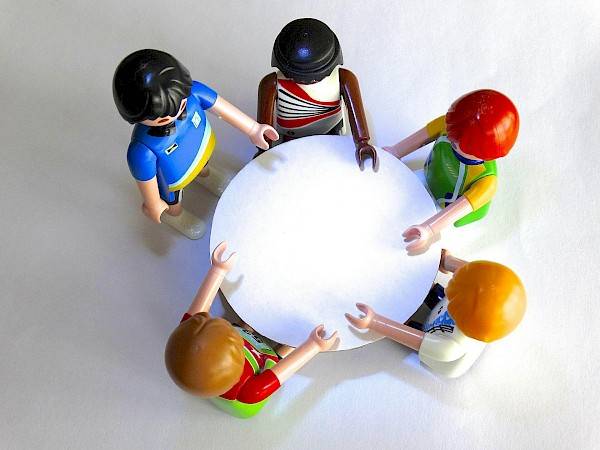Episode transcript The transcript is generated automatically by Podscribe, Sonix, Otter and other electronic transcription services.
Hello everyone. Welcome to the Five Minutes Podcast. Today I'd like to talk about round-robin brainstorming and I know that every time we talk about brainstorming, people truly think that they know how to do it. They just put people together. Everybody starts speaking and who speaks louder or it's a dominant personality, gets the decision, drives the discussion, etc. This is why so many introverts or so many people really do not feel comfortable speaking out loud. They really don't like brainstorming. However, brainstorming is super useful. It's really useful. And the round-robin tries to solve exactly this problem around personalities and help you to deliver a brainstorming without the influence of, I would say this strong personality. So everybody will have the chance to step in and provide ideas. Basically, what do we want? We want to generate ideas without interference, and we want also to build ideas on top of the order. Ideas basically what is this step is a very simple six-step process. Let's think about that. Okay. In a physical environment, imagine you and five other colleagues in a roundtable working on a brainstorming just to really help you to visualize the first step, you distribute index cards or maybe large Post-it notes or pieces of paper to each of them. In the second step, the facilitator will explain the problem, and explain clearly a specific objective they want to achieve with that round-robin brainstorming, it must be clear because otherwise people will really start being all over the place and they will not contribute to where you really want to be.
What do we do them in silence, each of us, will register our idea or the solution to the problem we are aiming for. And we will be provided with some time, maybe one minute, maybe 5 minutes. It depends on what is the problem. We want to talk, but this is in silence, so every single one of us will be able to write clearly. How do we see a solution to the problem? How do we see the problem? Then what do we do in the next step? In step four, we will pass our index card to the next person. It can be clockwise, or counterclockwise, but we will move our idea to my colleague on my side and I will receive an idea from my colleague on the other side. Then what I will do, I will read his or her idea, and I will take a second index card and I will write a second idea on the top of my original idea and the idea of my colleagues. So I will build a second index card with the comments I saw from the idea of my colleague. Then I will move my card. So when I move my card, I will keep the card.
I receive it from my colleague in front of me. Then I will receive a second card on the second round from my colleague. Then I will write the third one. So what I will do at the end of this process, is I will have all the index cards of my colleague in front of me and the other colleague on my side will have all my index cards. Let's suppose we do this six times. I will have six index cards of my colleague and also the colleague on my side will have my six index cards. But if we do a six-round do, remember that I am building on the top of my colleague, but my colleague is building on the top of the other colleague and the other colleague is building on the top of the order. So what is happening? We are all stepping into ideas of oracles colleagues without necessarily having to discuss them. And this drives me to step number six. So step number six, we collect all these papers and we put them on the wall. When we put them on the wall, what do we do? We organize the data. We organize, we eliminate duplicates, and then we decide which one we should move forward to. For example, a prototyping phase. And I. Know many of you will ask me so but this is very similar to Crawford’s slip.
And the answer is yes, it's absolutely similar. It's absolutely similar. However, there is a basic difference. Crawford's slip You produce one piece of information per time and you put it on the wall, but you don't receive input from your colleagues. This is the basic difference. The basic difference of the round-robin is exactly this. And just out of curiosity, many people ask me, why a round-robin? Is Robin the name? No. Round Robin comes from the French word Robin, which is ribbon. And over time they just change it to the concept of Robin. It's something like an adaptation of the name, and it's based on the concept that everybody plays against everybody. So, for example, in a soccer match, it's very common to see that, for example, when Team A plays against Team B, Team A plays against Team C, and this is exactly the concept. So you see ideas, you see ways of suggestion and brainstorming information from all your colleagues without the influence of personality. So think about that. This is very helpful in your work, especially if you are working, for example, in software trying to develop new apps.
This can be extremely useful for you. I hope you enjoyed this podcast and see you next week with another Five Minutes Podcast.

